Abstract
1 The possibility of pharmacodynamic and pharmacokinetic interactions of prazosin with indomethacin and with propranolol have been studied in healthy subjects. 2 In four out of nine individuals indomethacin considerably attenuated prazosin-induced hypotension, but noradrenaline concentrations were unchanged from the day when blood pressure fell greatly. The effect of prazosin in the other five subjects was not influenced by indomethacin. 3 Indomethacin prevented the rise in plasma renin activity seen following administration of prazosin alone. 4 Propranolol did not prevent the syncope associated with the first dose of prazosin. 5 Propranolol affected neither the absorption nor elimination of prazosin. 6 It is concluded that in certain subjects indomethacin can largely prevent the hypotensive effect of parazosin, possible by increasing adrenergic receptor sensitivity. The theoretical possibility that propranolol could influence prazosin disposition or syncope was not substantiated.
Full text
PDF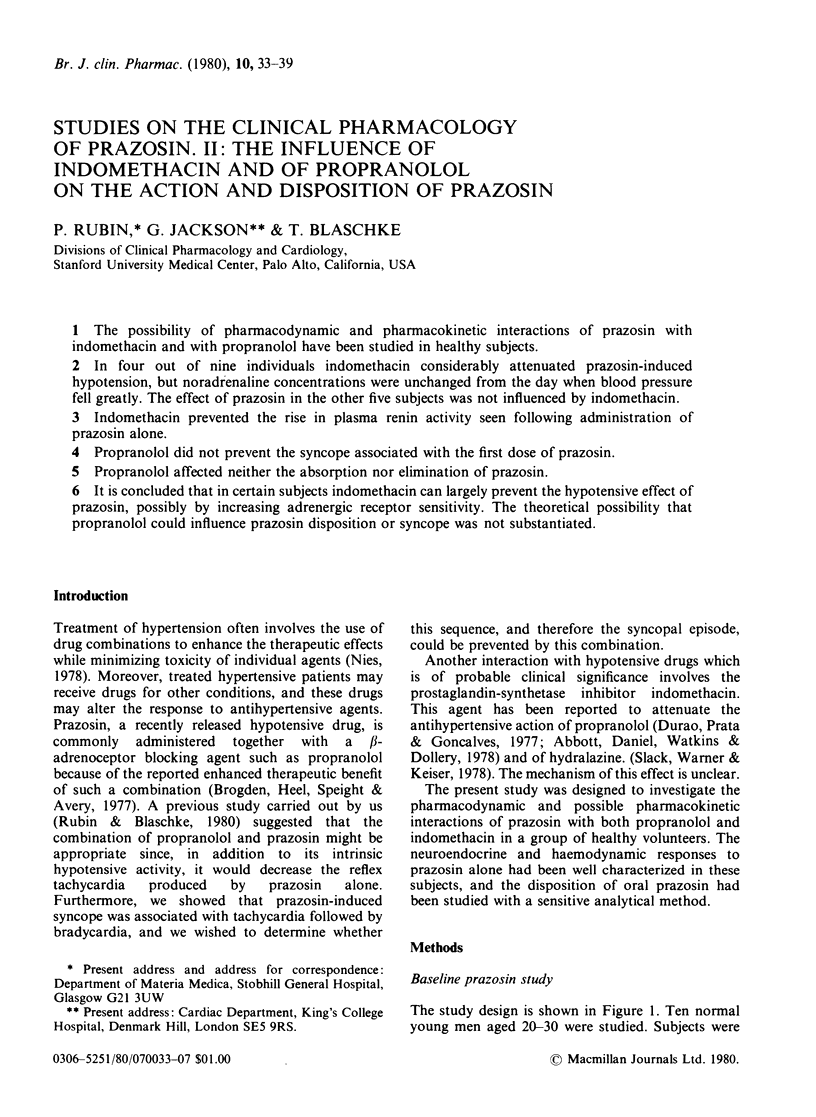

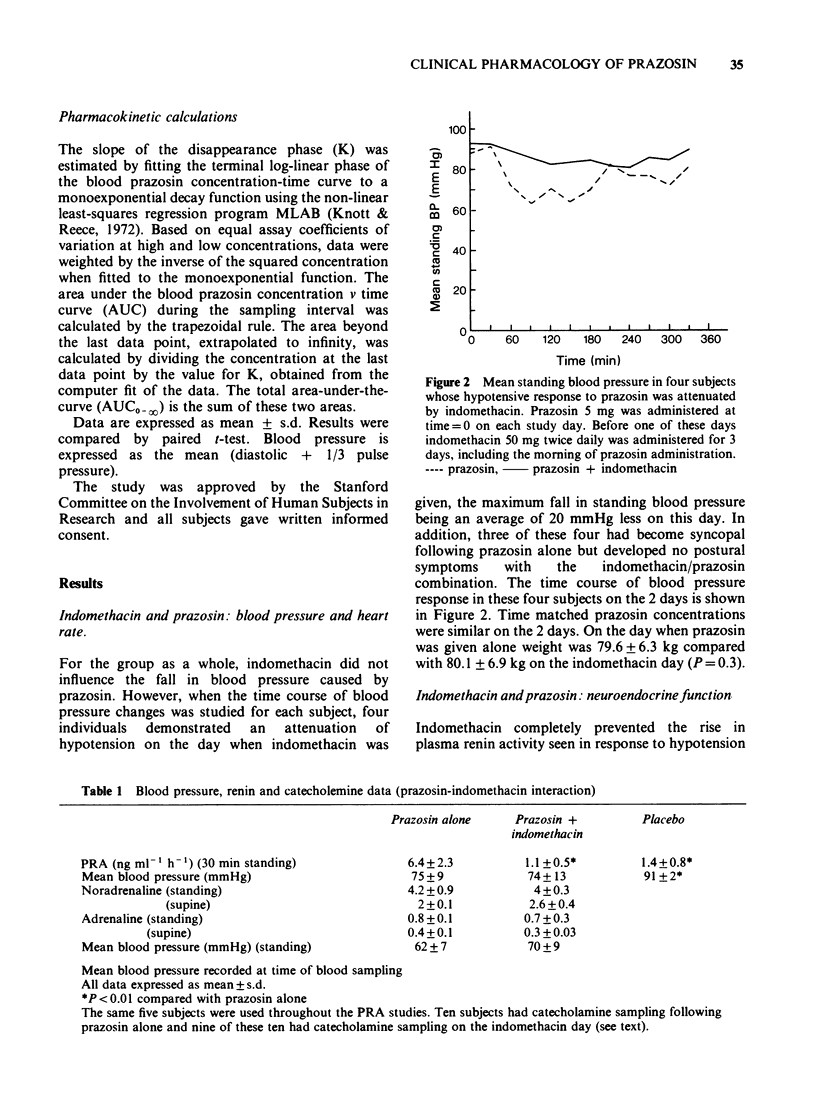
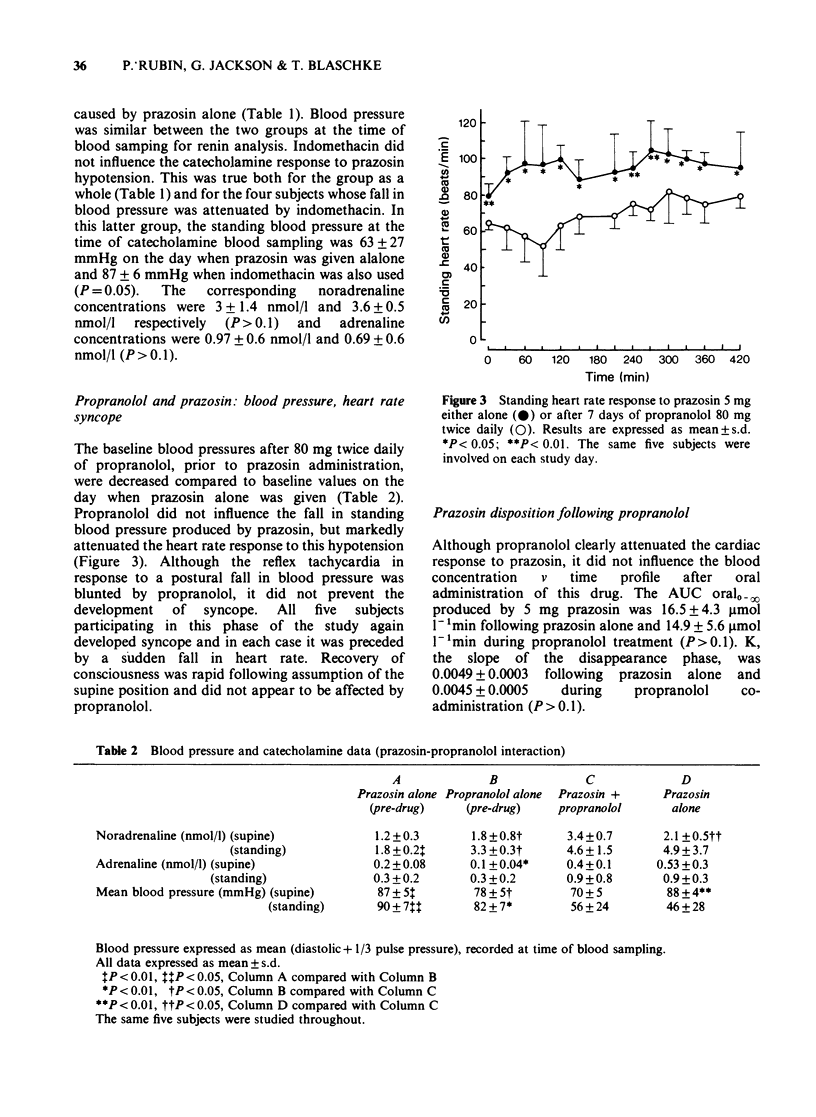
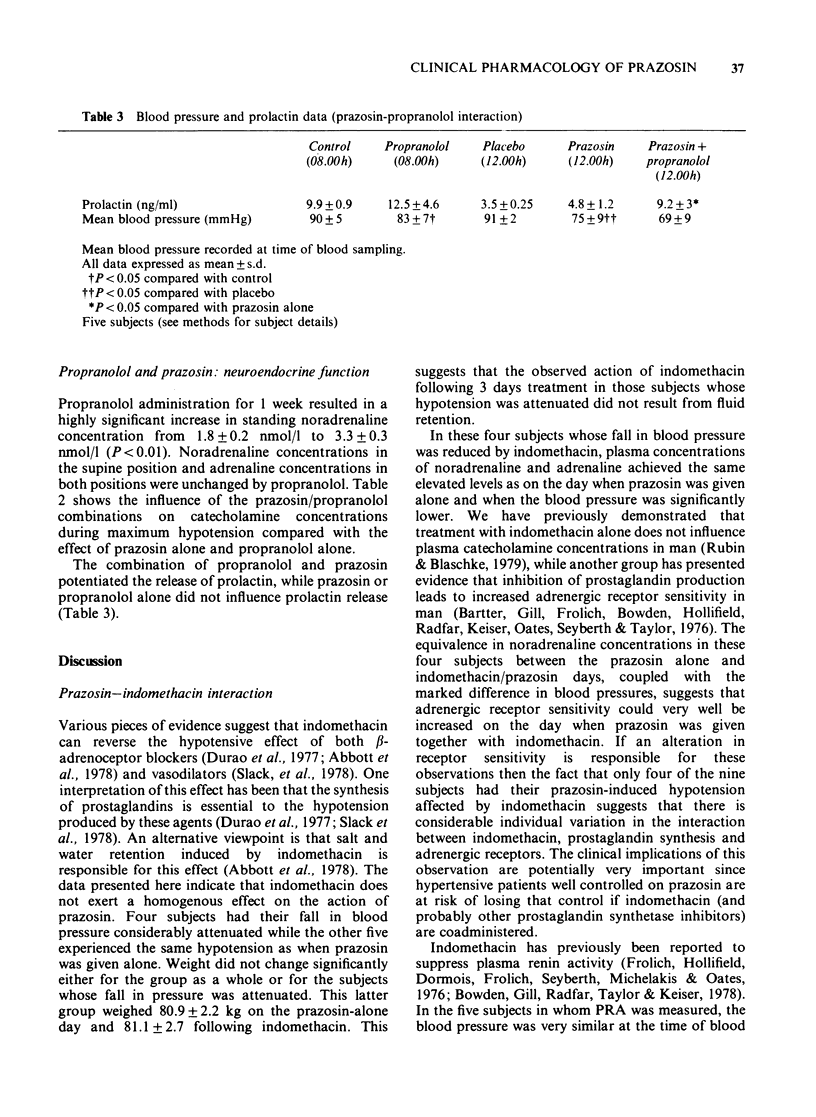
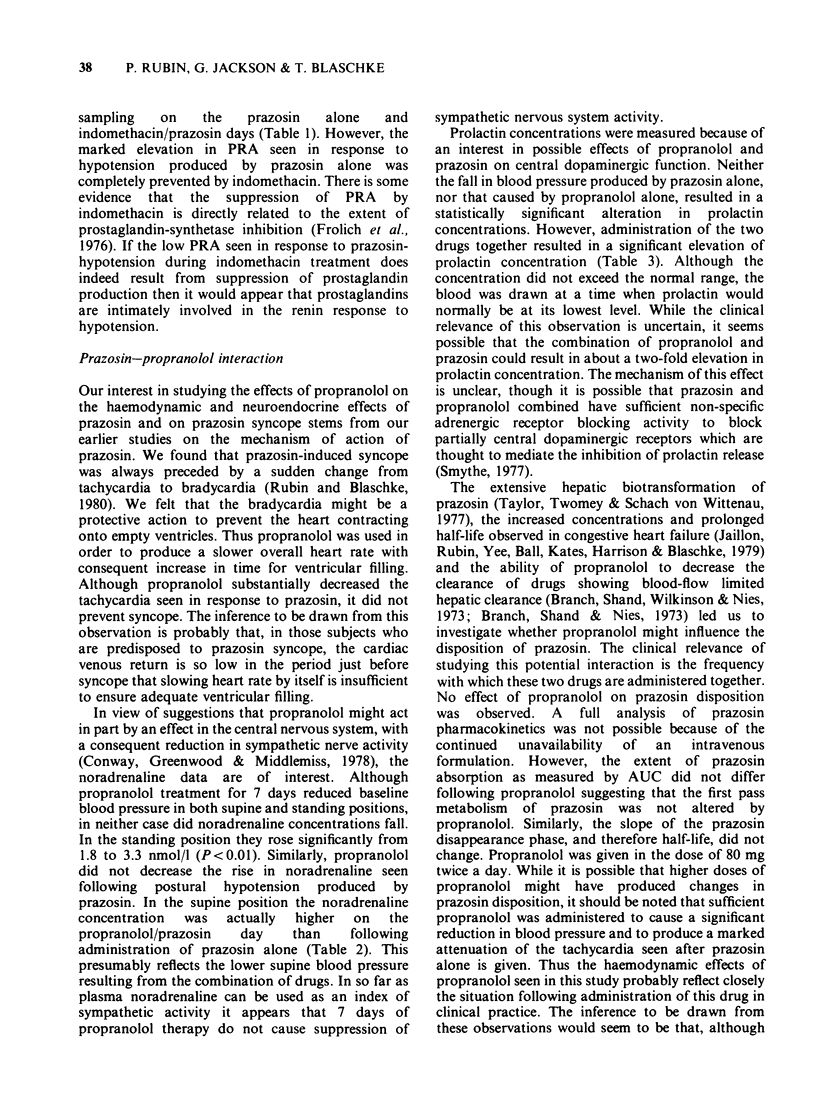
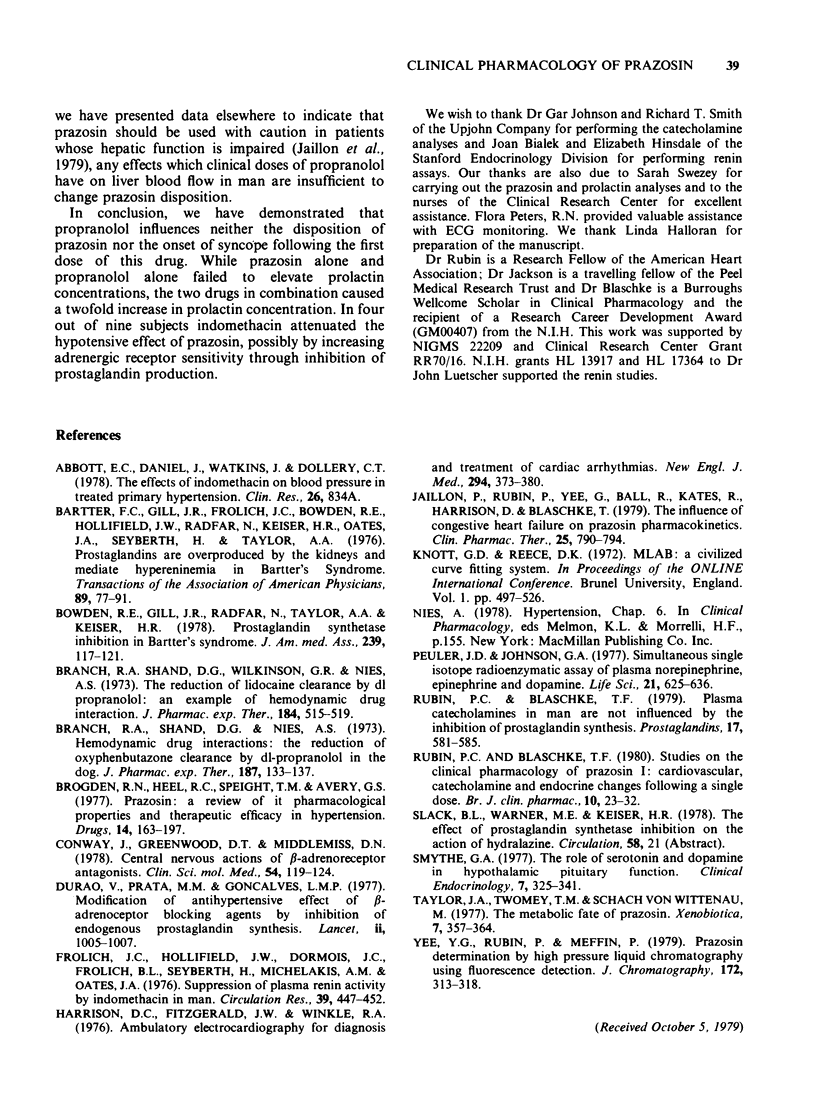
Selected References
These references are in PubMed. This may not be the complete list of references from this article.
- Bartter F. C., Gill J. R., Jr, Frolich J. C., Bowden R. E., Hollifield J. W., Radfar N., Keiser H. R., Oates J. A., Seyberth H., Taylor A. A. Prostaglandins are overproduced by the kidneys and mediate hyperreninemia in Bartter's syndrome. Trans Assoc Am Physicians. 1976;89:77–91. [PubMed] [Google Scholar]
- Bowden R. E., Gill J. R., Jr, Radfar N., Taylor A. A., Keiser H. R. Prostaglandin synthetase inhibitors in Bartter's syndrome. Effect on immunoreactive prostaglandin E excretion. JAMA. 1978 Jan 9;239(2):117–121. [PubMed] [Google Scholar]
- Branch R. A., Shand D. G., Nies A. S. Hemodynamic drug interactions: the reduction of oxyphenbutazone clearance by dl-propranol in the dog. J Pharmacol Exp Ther. 1973 Oct;187(1):133–137. [PubMed] [Google Scholar]
- Branch R. A., Shand D. G., Wilkinson G. R., Nies A. S. The reduction of lidocaine clearance by dl-propranolol: an example of hemodynamic drug interaction. J Pharmacol Exp Ther. 1973 Feb;184(2):515–519. [PubMed] [Google Scholar]
- Brogden R. N., Heel R. C., Speight T. M., Avery G. S. Prazosin: a review of its pharmacological properties and therapeutic efficacy in hypertension. Drugs. 1977 Sep;14(3):163–197. doi: 10.2165/00003495-197714030-00002. [DOI] [PubMed] [Google Scholar]
- Conway J., Greenwood D. T., Middlemiss D. N. Central nervous actions of beta-adrenoreceptor antagonists. Clin Sci Mol Med. 1978 Feb;54(2):119–124. doi: 10.1042/cs0540119. [DOI] [PubMed] [Google Scholar]
- Durão V., Prata M. M., Gonçalves L. M. Modification of antihypertensive effect of beta-adrenoceptor-blocking agents by inhibition of endogenous prostaglandin synthesis. Lancet. 1977 Nov 12;2(8046):1005–1007. doi: 10.1016/s0140-6736(77)92899-9. [DOI] [PubMed] [Google Scholar]
- Frölich J. C., Hollifield J. W., Dormois J. C., Frölich B. L., Seyberth H., Michelakis A. M., Oates J. A. Suppression of plasma renin activity by indomethacin in man. Circ Res. 1976 Sep;39(3):447–452. doi: 10.1161/01.res.39.3.447. [DOI] [PubMed] [Google Scholar]
- Harrison D. C., Fitzgerald J. W., Winkle R. A. Ambulatory electrocardiography for diagnosis and treatment of cardiac arrhythmias. N Engl J Med. 1976 Feb 12;294(7):373–380. doi: 10.1056/NEJM197602122940706. [DOI] [PubMed] [Google Scholar]
- Jaillon P., Rubin P., Yee Y. G., Ball R., Kates R., Harrison D., Blaschke T. Influence of congestive heart failure on prazosin kinetics. Clin Pharmacol Ther. 1979 Jun;25(6):790–794. doi: 10.1002/cpt1979256790. [DOI] [PubMed] [Google Scholar]
- Peuler J. D., Johnson G. A. Simultaneous single isotope radioenzymatic assay of plasma norepinephrine, epinephrine and dopamine. Life Sci. 1977 Sep 1;21(5):625–636. doi: 10.1016/0024-3205(77)90070-4. [DOI] [PubMed] [Google Scholar]
- Rubin P. C., Blaschke T. F. Studies on the clinical pharmacology of prazosin. I: Cardiovascular, catecholamine and endocrine changes following a single dose. Br J Clin Pharmacol. 1980 Jul;10(1):23–32. doi: 10.1111/j.1365-2125.1980.tb00498.x. [DOI] [PMC free article] [PubMed] [Google Scholar]
- Rubin P., Blaschke T. Plasma catecholamines in man are not influenced by the inhibition of prostaglandin synthesis. Prostaglandins. 1979 Apr;17(4):581–585. doi: 10.1016/0090-6980(79)90009-1. [DOI] [PubMed] [Google Scholar]
- Smythe G. A. The role of serotonin and dopamine in hypothalamic-pituitary function. Clin Endocrinol (Oxf) 1977 Oct;7(4):325–341. doi: 10.1111/j.1365-2265.1977.tb01331.x. [DOI] [PubMed] [Google Scholar]
- Taylor J. A., Twomey T. M., von Wittenau M. S. The metabolic fate of prazosin. Xenobiotica. 1977 Jun;7(6):357–364. doi: 10.3109/00498257709035794. [DOI] [PubMed] [Google Scholar]
- Yee Y. G., Rubin P. C., Meffin P. Prazosin determination by high-pressure liquid chromatography using fluorescence detection. J Chromatogr. 1979 Apr 21;172:313–318. doi: 10.1016/s0021-9673(00)90967-1. [DOI] [PubMed] [Google Scholar]


